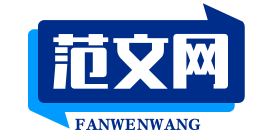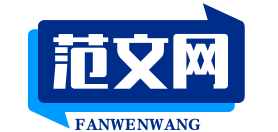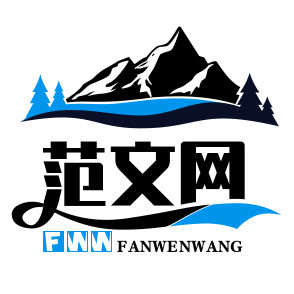The Art of Crafting Effective Job Descriptions in English: A Comprehensive Guide
Introduction
In the realm of human resources management, a well-crafted job description is the cornerstone of attracting and retaining top talent. It serves as a blueprint for defining the responsibilities, qualifications, and expectations of a role, guiding both the employer and the employee throughout the hiring process and beyond. When it comes to international businesses or organizations operating across linguistic borders, an accurate and compelling English translation of your job description becomes imperative. This comprehensive guide delves into the art of crafting effective job descriptions in English, ensuring clarity, precision, and cultural sensitivity in your recruitment efforts.

Understanding the Purpose of a Job Description
A job description, at its core, is a document that outlines the essential functions, duties, responsibilities, and sometimes, the desired qualifications for a particular position. It acts as a communication tool between the employer and potential candidates, setting the stage for a mutual understanding of what the role entails and who is best suited for it. In an English-speaking context or when targeting an international audience, a well-written job description in English enhances professionalism, broadens the candidate pool, and facilitates a seamless recruitment process.
Key Components of an Effective English Job Description
1、Job Title: Clearly define the position using a concise yet descriptive title that accurately reflects the role's nature and level within the organization.
2、Overview: Provide a brief introduction to the department or team the position belongs to, along with a high-level overview of the responsibilities and the impact the role will have on the organization.
3、Essential Duties & Responsibilities: List the primary tasks and responsibilities associated with the role. Use bullet points for clarity and ensure each point is specific, measurable, achievable, relevant, and time-bound (SMART criteria).
4、Qualifications & Requirements: Outline the necessary education, experience, skills, and any certifications required for the position. Use clear language and avoid jargon where possible.
5、Preferred Qualifications: Mention any additional qualities or experiences that would be beneficial but are not mandatory. This section can also include soft skills or personal attributes desired in the ideal candidate.
6、Physical Requirements: Describe any physical demands of the job, such as lifting requirements, prolonged sitting or standing, travel expectations, etc.
7、Work Environment: Describe the general work environment, including any specific conditions or hazards that may be present.
8、Benefits & Compensation: Outline the compensation package, including salary range, benefits (health insurance, vacation days, etc.), and any other perks associated with the role.
Writing Tips for Effective Communication in English
Clarity & Simplicity: Use straightforward language that is easy to understand for a broad audience. Avoid industry-specific jargon or overly complex sentences.
Active Voice: Employ active voice to make your descriptions more direct and engaging. For example, instead of "Responsibilities include managing projects," write "Manages projects."
Bullet Points: Break down information into bullet points for easy scanning and comprehension.
Quantifiable Goals: Wherever possible, use numbers to quantify responsibilities and achievements. This not only makes your description more concrete but also helps in performance evaluations later.
Cultural Awareness: When targeting an international audience, be mindful of cultural nuances and avoid assumptions that may be offensive or misunderstood in other cultures.
Tailor to Audience: Adjust your language and style to match the expected audience's preferences and level of formality. For example, a technical role may require more industry-specific terminology while a customer service position may emphasize interpersonal skills.
Ensuring Accuracy & Avoiding Bias
Legal Compliance: Ensure your job descriptions comply with all applicable laws and regulations, particularly those related to discrimination (e.g., Title VII of the Civil Rights Act in the US). Avoid using gender-biased language or any other form of discriminatory wording.
Inclusive Language: Promote diversity and inclusion by using inclusive language throughout your description. For instance, use "team member" instead of "assistant" or "helper."
Objective Criteria: Base hiring decisions on objective criteria listed in your job description to avoid unconscious bias. Ensure all applicants are evaluated against the same standards.
Translating Job Descriptions: Best Practices & Pitfalls to Avoid
When translating your job description into English (or any other language), accuracy and cultural adaptability are key. Here are some best practices:
Professional Translation Services: Engage professional translators with expertise in both languages and an understanding of the industry context to ensure accuracy and cultural appropriateness.
Consistency: Maintain consistency in terminology across all translations to prevent confusion among applicants and within your organization.
Cultural Adaptation: Adapt language and examples to fit the cultural context of your target audience. For instance, references to specific local laws or industry practices should be adjusted accordingly.
Review & Feedback: Have your translated job descriptions reviewed by native speakers or members of the target culture to ensure they are culturally sensitive and effectively convey your intended message.
Avoid Literal Translations: While literal translations can be useful, they may not always convey the intended meaning or tone effectively. Focus on conveying the essence of the message rather than word-for-word translation.
Conclusion
Crafting effective job descriptions in English is a delicate balance of clarity, precision, and cultural sensitivity. By following this guide's tips and best practices for writing and translating job descriptions, you can create compelling narratives that attract top talent from diverse backgrounds while ensuring compliance with legal standards and promoting inclusive hiring practices. Remember, a well-written job description is not just about finding the right candidate; it's also about creating a positive first impression and fostering a culture of respect and opportunity within your organization.








